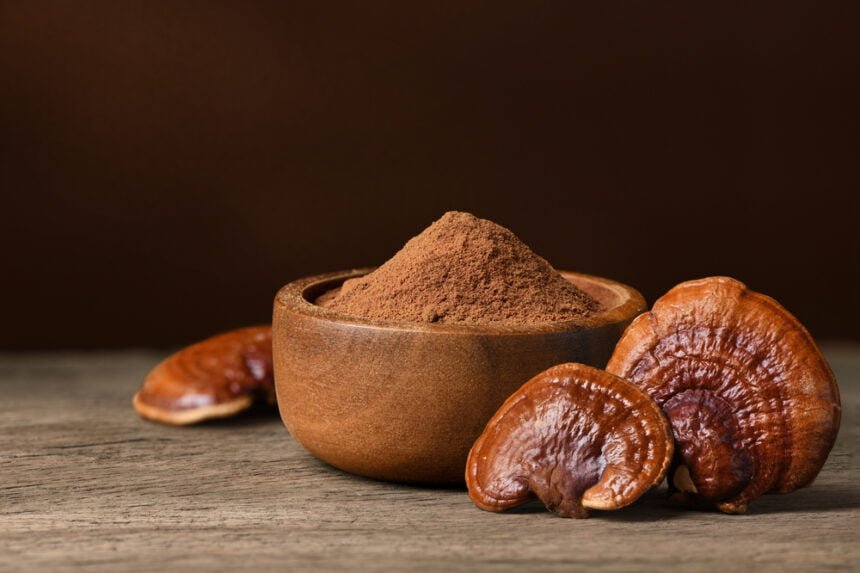Are you looking for new supplements to stay healthy? You may want to consider the benefits of using Reishi extracts.
Reishi extracts are derived from the Ganoderma lucidum, which is a powerful medicinal mushroom . These extracts have become popular in recent years, since they have many remarkable health benefits. They are known as the “mushroom of immortality” in traditional Chinese medicine, as this post from the NIH shows. These extracts have been used for centuries to promote overall well-being.
As Healthline reports, Reishi extracts are rich in bioactive compounds such as polysaccharides, triterpenoids, and antioxidants. They have excellent anti-inflammatory and immune-modulating properties. These extracts can improve immune function, which helps the body fight infections and diseases. Moreover, Reishi is recognized for its adaptogenic qualities, helping the body adapt to stress and promoting a balanced response to various environmental challenges.
Studies suggest that Reishi extracts may also contribute to cardiovascular health by reducing blood pressure and cholesterol levels. Additionally, the mushroom’s potential anti-cancer properties are being explored, making Reishi a promising ally in the quest for holistic health and longevity. Therefore, they can be a great part of a healthy diet.
As a superior dietary supplement, Reishi mushroom (Ganoderma Lucidum)extract is valued for both its edible and medicinal properties. But how can one choose a high-quality Reishi extract? Here are some key identification methods I’ve summarized for everyone:
Check for Key Active Ingredients in Quality Reishi Extracts:
High-quality Reishi extracts usually contain specific ranges of active components. Reishi Polysaccharides: In quality extracts, the content typically ranges from 10% to 50%. Highly concentrated extracts may contain even higher proportions, up to 60% or more. Triterpenes: These are usually found in lower amounts than polysaccharides, generally between 1% and 5%, and this ratio can vary depending on the extraction technique and specific Reishi species.
Rational and Scientific Extraction Methods:
Different extraction methods significantly affect the efficiency of extracting active components from Lingzhi. Some methods are more effective in extracting specific compounds, such as polysaccharides or triterpenes. Selectivity of Components: Different extraction techniques may have varying selectivity for different chemical components. For instance, water extraction tends to extract water-soluble components (like polysaccharides), while alcohol extraction or supercritical CO2 extraction may more effectively extract lipid-soluble components (like triterpenes). Protection of Active Components: Some extraction methods may damage or reduce the efficacy of active components in Lingzhi. For example, high temperatures or prolonged extraction processes can degrade sensitive chemical compounds. Purity and Impurities: Different extraction methods can result in varying degrees of impurities in the final product. Some methods are more effective in removing impurities, thus enhancing the purity of the extract. Safety: The solvents and conditions used in extraction (such as temperature and pressure) not only affect the extraction outcome but can also impact the safety of the product. For instance, methods using organic solvents must ensure complete solvent removal to avoid residues.
Quality Tests by Third-Party Laboratories for Reishi Extracts:
Quality testing reports for Reishi mushroom extracts typically include a series of analyses and tests to ensure their safety, efficacy, and consistency. Important reports include: Microbial Testing: Ensures the absence of harmful microorganisms like bacteria, molds, yeasts, and E. coli. These tests ensure the microbial safety of the product. Heavy Metal Testing: Checks for the presence of heavy metals (such as lead, mercury, arsenic, cadmium) to ensure levels are within safe standards. Pesticide Residue Testing: Analyzes for any pesticide residues, especially if the Reishi mushrooms are wild-harvested. Solvent Residue Testing: If chemical solvents are used in the extraction process, solvent residue testing is necessary to ensure complete solvent removal, complying with safety standards. Functional Testing: Biological or pharmacological tests for specific functions of the extract (such as immune modulation, antioxidant properties). Physical and Chemical Property Testing: Tests like pH value, moisture content, viscosity, etc., reflecting the physical and chemical stability of the extract.
Proper Packaging of High-Quality Reishi Extracts:
The packaging of high-quality Reishi extracts impacts their quality in several ways: Protection of Active Components: Active ingredients in Reishi extracts (such as polysaccharides and triterpenes) may be sensitive to light, oxygen, temperature, and humidity. Appropriate packaging protects these components from environmental damage, thus maintaining their stability and efficacy. Contamination Prevention: Sealed packaging prevents the entry of microorganisms and other contaminants, maintaining the purity and hygiene of the extract. Extended Shelf Life: Quality packaging can extend the product’s shelf life, reducing degradation due to oxidation, moisture, or other external factors. Storage and Transportation: Sturdy packaging helps protect the extract from physical damage during transportation and facilitates storage. Information Communication: Packaging labels and instructions provide consumers with product information, such as ingredients, usage methods, production batches, and expiration dates, ensuring proper use by consumers.
From Reputable Manufacturers or Brands:
Strict Quality Control: Reputable manufacturers typically have stricter quality control processes, with clear standards and procedures from raw material selection, production process to final product testing. Advanced Extraction Technology: Well-known brands often use advanced extraction technologies, which can effectively retain the active components in Reishi while removing unnecessary impurities. Continuous R&D Investment: Brands with good reputations usually invest more resources in product development, ensuring their products continually meet or exceed industry standards. Compliance with Regulations and Industry Standards: These brands usually strictly adhere to relevant health and safety regulations, with products meeting international or national quality standards. Transparency and Traceability: Reputable brands provide complete product information, including source of raw materials, manufacturing processes, and ingredients, offering higher transparency and traceability. Quality Customer Service: Well-known brands generally offer quality customer service, including after-sales service and consumer education, which helps consumers better understand and use the products.

